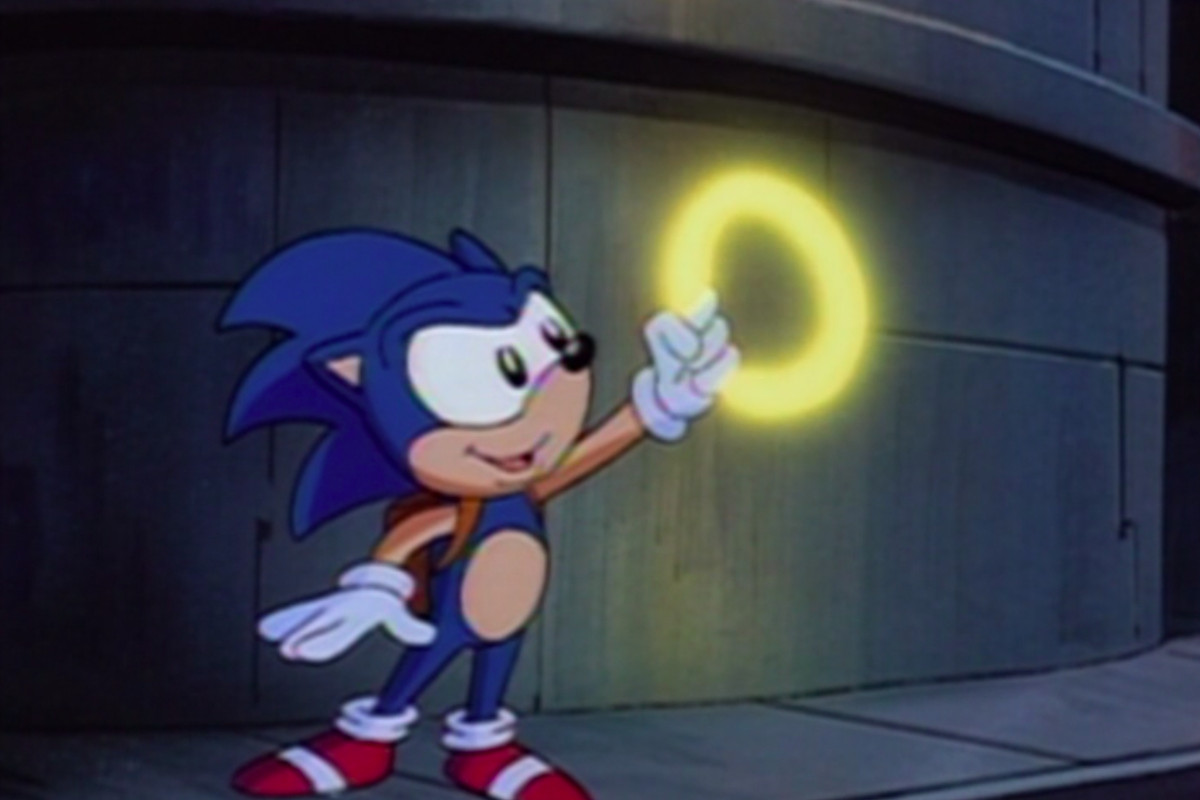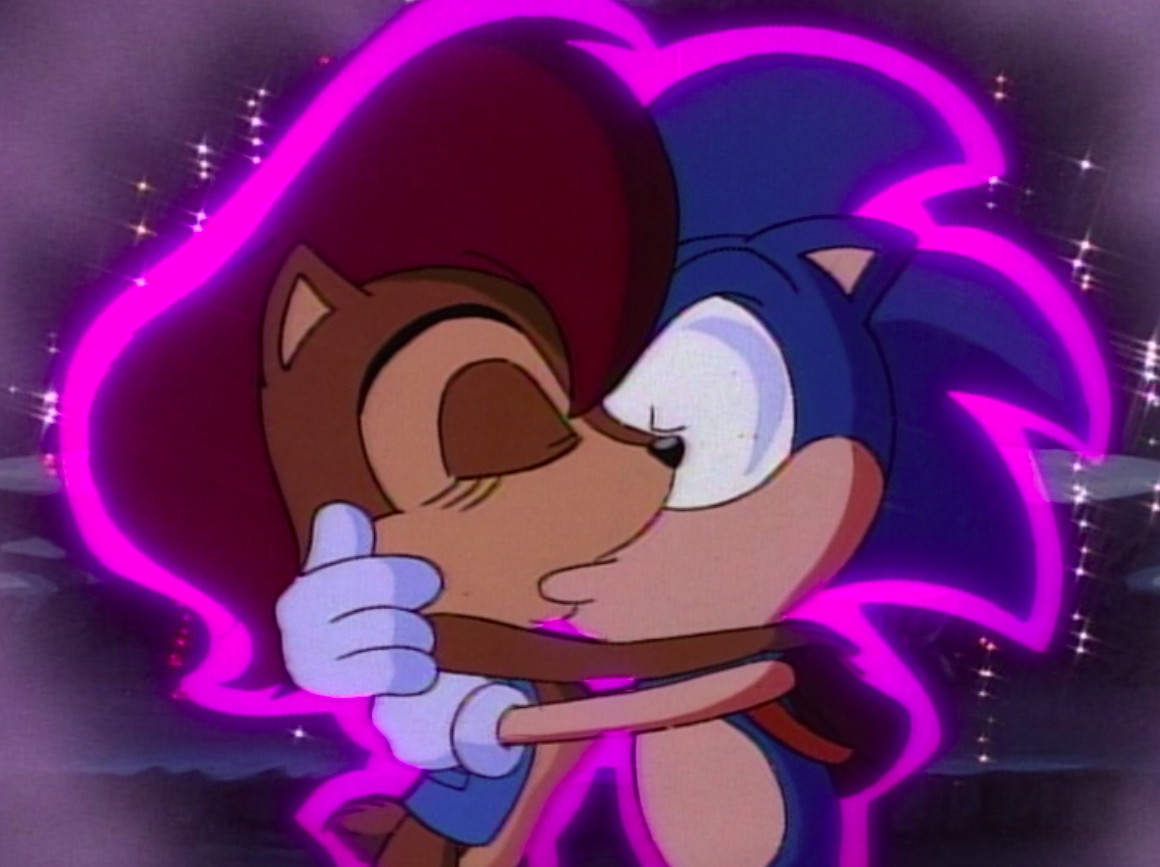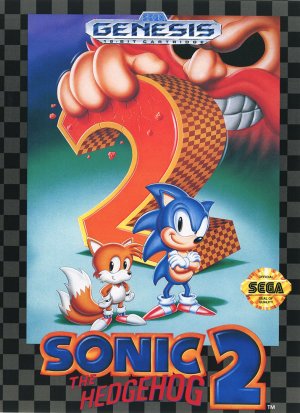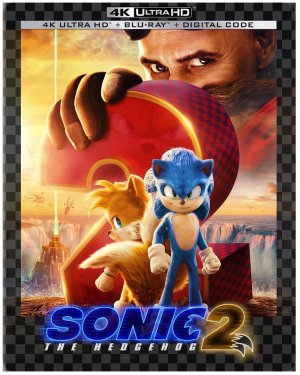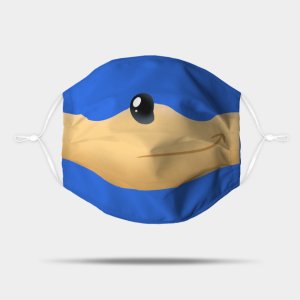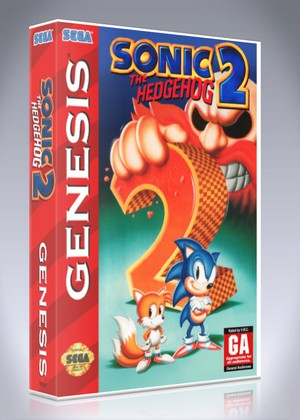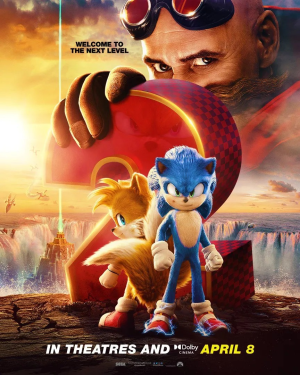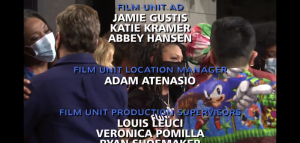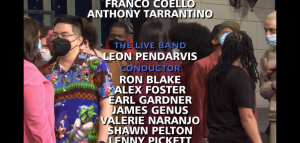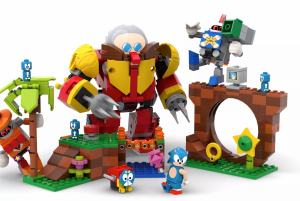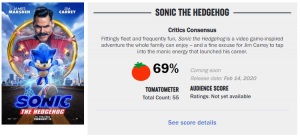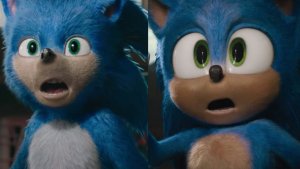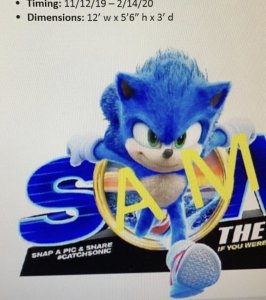How Sonic scored two different animated series at the same time
An unusual deal paved the way for Sonic the Hedgehog and Adventures of Sonic the Hedgehog
By
Christopher Inoa Feb 18, 2020, 8:41pm EST
In 1993, there wasn’t a character in America more popular than
Sonic the Hedgehog. According to a
New York Times report from that time, in just two years, Sonic had become, “a $1 billion dollar business all to himself.” Because of Sonic’s initial success, the
Times claimed that Sega was not only “threatening to topple Nintendo,” but also “aiming at Disney for control of the world of entertainment.”
With surging popularity, it made sense that Sega wanted kids to have their eyes trained on Sonic even when they turned off their consoles. The chili-dog-loving speed demon would soon appear in comic books, merchandise, and that fall, animated series. And not just one; Sonic became the first character in animation history to star in two separate series that aired at the same time.
Adventures of Sonic the Hedgehog, developed by Kent Butterworth (
The Ren & Stimpy Show), Phil Harnage (
Captain Planet and the Planeteers), and Bruce and Reed Shelly (
The Super Mario Bros. Super Show!), premiered on Sept. 6th, 1993, was a screwball, Tex Avery-style comedy that ran for 65 episodes (and one special). Every episode followed Sonic and Tails as they went up against Dr. Robotnik and his robot cronies, thwarting their plans to takeover the planet Mobius. The show aired Monday through Friday on syndication in various markets.
Sonic the Hedgehog, usually referred to as “
SatAM,” premiered two weeks later, and ran for 26 episodes split over two seasons. The series had a higher production value than
Adventures, and told a more cohesive storyline, despite airing on ABC Saturday Morning. Even though
SatAM and
Adventures shared the same main character and was even voiced by the same actor (Steve Urkel himself, Jaleel White), the former couldn’t have been any different than the latter.
SatAM’s story was darker, taking place in a post-apocalyptic Mobius where Robotnik is almost in complete control of the planet. Sonic, Tails, and the rest of the Knothole Freedom Fighters, a group of characters created specifically for the series (so, sadly, no Big the Cat), attempt to overthrow
Egg Man and free Mobius from his evil tyranny.
The series separated itself from the usual Saturday morning cartoon fare by having the heroes, at times, fail to stop Robotnik’s evil schemes. The characters also had to deal with grief over the loss of fellow freedom fighters.
SatAM was also more mature than
Adventures and most other Saturday morning cartoons when it came to the relationship between two of the main characters, Sonic and Princess Sally, his childhood friend and the planet’s rightful ruler. In the second season finale, “The Doomsday Project,” Sally and Sonic share a celebratory and passionate kiss, certainly not something you would see on
Tom & Jerry Kids.
SatAM was developed by Len Janson (
The Real Ghostbusters), and Bruce and Reed Shelly. Both series were produced by DIC, producer of
Inspector Gadget and
Captain Planet, and it was their Executive Vice President of Creative Affairs at the time, Robby London, who came up with the idea to produce two different series. After pitching the darker take to ABC, the network surprised DIC executives by not only expressing interest in having Sonic appear on their network, but offering them an on-air commitment. “Usually they’ll do a development deal,” London told Polygon in a phone interview, “but this property was so hot they said, ‘you know what? Let’s do it.’”
With a deal in place, DIC wanted to take things one step further by not only having
SatAM air on ABC, but also have it air on first-run syndication, which had never been done before. DIC did something similar with
The Real Ghostbusters in the late 1980s. After the first season of
TRG aired on ABC, the second and third seasons aired simultaneously, the second in syndication, the third on the network.
DIC went back to ABC and pitched their idea to Mark Pedowitz, former Senior Vice President of Business Affairs and Contracts at ABC (and currently the President and CEO of The CW). Pedowitz, who London remembers as being, “ a formidable, intimating guy,” swiftly rejected the idea, telling him, “If you guys want to do syndication, be our guest, go with God, but you won’t be on our network.”
Disappointed, DIC almost dropped the idea, as the clear choice between syndication and network was network every time. “Network was always the preferred placement,” London said, “the license fees were better, and you got one license fee upfront, without having to piece together the financing; plus network shows got better ratings.”
However, even with his initial idea shot down, London wasn’t deterred. He went to his boss, Andy Heyward, and presented him with an alternative, “What if we re-approach ABC and do the following, we do two series simultaneously, but they will be completely different, so no one will confuse the product?” Heyward liked the idea, they ventured back to ABC, and pitched what would become
Adventures. To their surprise, ABC obliged.
London had no idea as to why this wasn’t done before, however, he did know why it was done at the time. “Necessity is the mother of invention,” he said, “one thing about Andy Heyward and DIC at the time, we were extremely innovative when it came to the marketing and distribution of our ideas, and they had to be. While DIC was the biggest independent animation studio in North America, it still had to consistently come up with unique ways to stay competitive against animation studios with major studio backing like Disney, Warner Bros., FOX ( who also owned TV networks), and other independent studios like Sunbow and Nelvana. There was a lot of competition for a limited number of time slots, so to stay competitive London said that he and his team at DIC, “were required to find innovative ways to finance our shows.”
Image: DIC
SatAm ran until December 1994. A third season of was planned but before production could start, ABC canceled the series. As to why
SatAM, London assumes it was either a ratings decision or change in direction. ABC was bought by Disney in 1995 and in a
video interview for the SatAM DVD release, writer Ben Hurst said that the show’s second season was up against the most popular children’s show airing at the time, FOX Kids’
Mighty Morphin’ Power Rangers. And if it wasn’t getting pummeled by
Power Rangers in the ratings,
SatAM wasn’t airing at all, as episodes were delayed whenever ABC decided to air sports instead of cartoons on weekends.
DIC produced one more Sonic series, 1999’s
Sonic Underground, a complete reboot where Sonic and his siblings Sonia and Manik go on a quest to find their missing mother, and again try to overthrow Robotnik, who rules over Mobius. The show ran for 40 episodes, and was followed by two
more Sonic cartoons: TMS Animations
Sonic X in 2003, the first Sonic anime series that aired on FOX, and 2015’s
Sonic Boom, a CG animated series produced by Technicolor Animation Productions. Both ran for two seasons.
Hurst, who passed in 2010, became quite active in the
SatAM fan community, and even shared details with fans
on his attempts to revive the series, either with a full third season or a feature film. Sega passed, however, the series does live on thanks to
Fans United for SatAM, a fan group that has kept the show going in the form of a webcomic. They’ve also funded a
fan film, and a subsection of that group,
Team Sea3son, have been producing a
fan-funded, unofficial third season since 2012.
Much like
the balloon that flew above midtown Manhattan in the 1993 Thanksgiving Day Parade, the hype around Sonic deflated. Almost 30 years since his first appearance, and days away from his big screen debut, Sonic is mainly an afterthought as far as video games are concerned. The blue buzzsaw
couldn’t make the transition to 3D and now it’s a small miracle we can get anything close to a good Sonic game. So while today he’s just another face on the character select screen in many Nintendo party games, there was a time where Sonic was king, so popular that he was able to get two animated series based on him made at the same time, something that hadn’t happened before or since.

